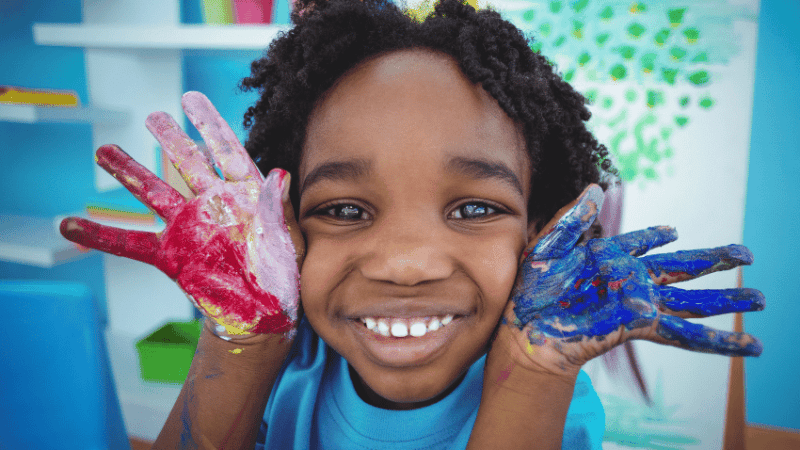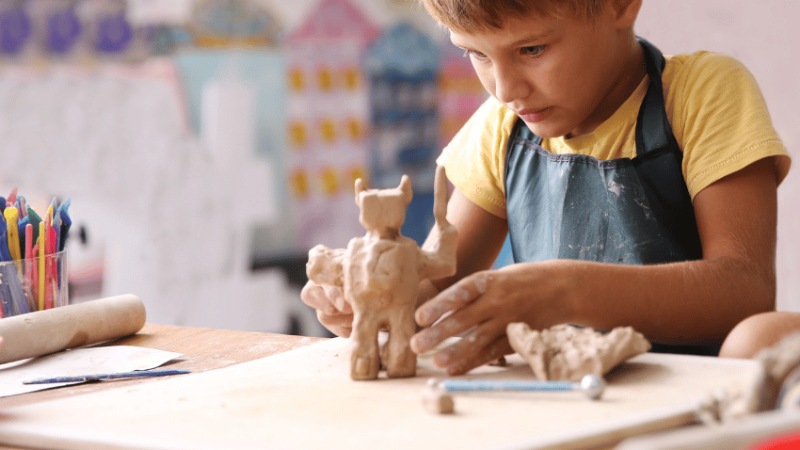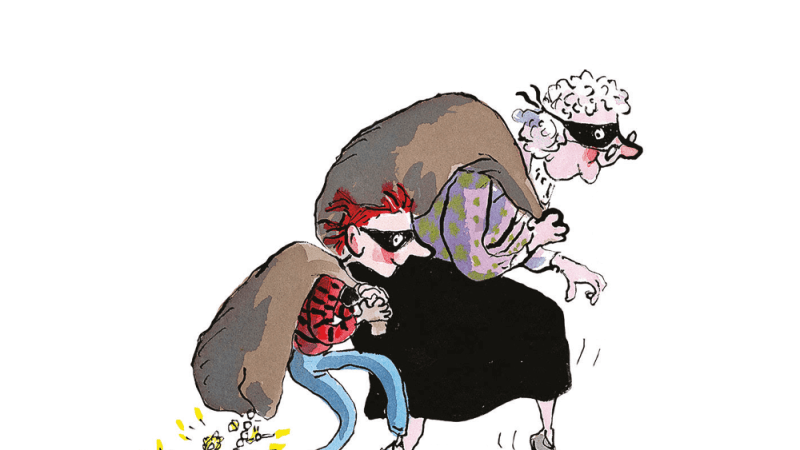If paintings could talk – Using artworks as a moment in time to launch learning activities
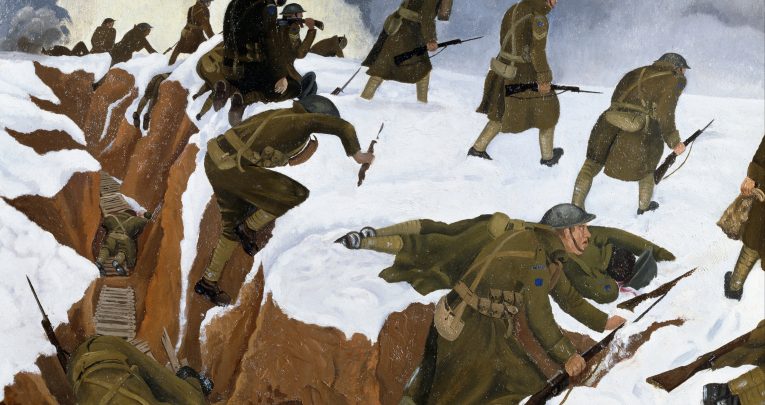
They say a picture paints a thousand words, so why not get children discussing a few of them, suggests Sophie Merrill…
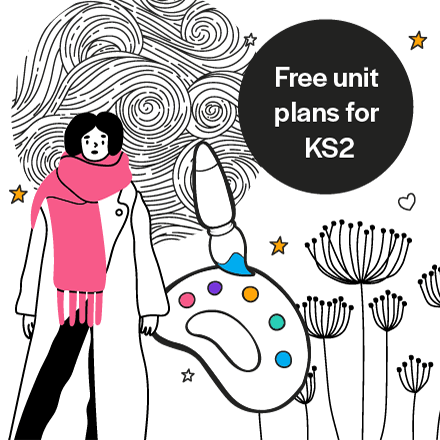
Well what can you do with a painting? The simple answer to this is – lots! Paintings are so much more than a canvas or a board covered in paint. They can tell a story (the story of the tormented artist that created it). Or, they give us an insight into the past – capturing that moment. They are a window of opportunity.
I use paintings on a regular basis, not only for those messy Friday afternoons where you raid the art cupboard, but to support the learning that goes on across the curriculum as part of a holistic approach. I can already hear you ask ‘how?’. Well, here are a few paintings together with suggestions on how they could be used.
I start all of my sessions on paintings by asking the same questions. What does it depict? What information does it give us? How does it make us feel? They are simple prompts that get the children to look at the paintings in the most basic way.
To dig a little deeper, begin to think about the atmosphere of the painting. Give the children a selection of words that may or may not describe aspects of the picture, and get them to choose which words they think fit this particular artwork, justify their selections with evidence from the piece.
This is a great guided-reading activity. You are asking the children to use the same skills you would with a text, just in a different way. A great way to extend this, providing they haven’t already been told the title, is to ask the children to name the painting. The responses can be incredibly powerful and thought provoking.
Over the Top by John Nash
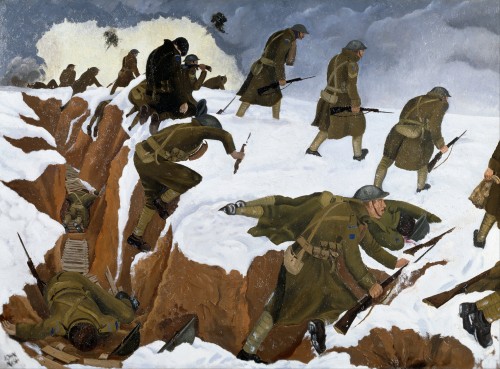 This painting is a great way to explore the horrors of the First World War, either as part of a standalone project or as part of a wider understanding of war throughout history.
This painting is a great way to explore the horrors of the First World War, either as part of a standalone project or as part of a wider understanding of war throughout history.
The human stories that can be told in this painting are remarkably powerful and are great for exploring empathy and emotive language in KS2. A great way to start this would be through drama, with the children re-creating the painting in tableau form.
Start simply by asking the children to thought-track the figures they have taken on in the painting. What can they see, hear and smell? Building up this bigger multisensory picture will deepen the experience – try keeping lights low and playing music and/or sound effects, and ask how they feel about what is going on around them.
This can be a great opportunity to extend vocabulary and work on using language to create atmosphere, and all of this work can lead on to some powerful diary or letter writing. Or by using the works of Rupert Brooke and Wilfred Owen alongside the paintings, the children could create their own poems.
Claud Duval by William Powell Frith
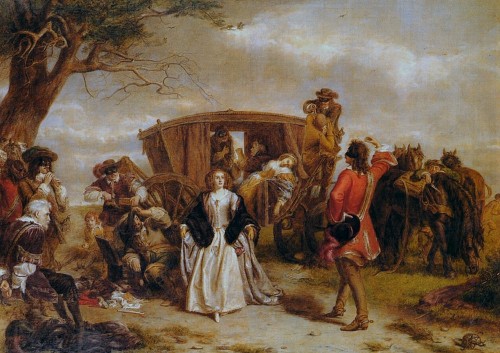 I’ve used this painting many times as a hook into a unit on Alfred Noyes’ poem The Highwayman, a big favourite of mine. It gives the children context of what a highwayman is before they read the poem.
I’ve used this painting many times as a hook into a unit on Alfred Noyes’ poem The Highwayman, a big favourite of mine. It gives the children context of what a highwayman is before they read the poem.
It’s a great painting for looking at exploring dialogue. There is so much going on and so many different figures to look at. A starting point would be to simply identify who’s who – the ‘good guys’ and the ‘bad guys’, if you like. This would support work on dialogue as it builds in aspects of characterisation, dialect and grammatical structures.
This naturally leads on to drama. In pairs or groups, get the children to take on different sections of the painting, from the woman being forced to dance by Claud Duval to the man pleading in the carriage. These conversations can be recorded and then used to form written dialogue, which in turn can be used as a basis for writing play scripts. A nice little side activity from this would be to create reward posters.
A Spate in the Highlands by Peter Graham
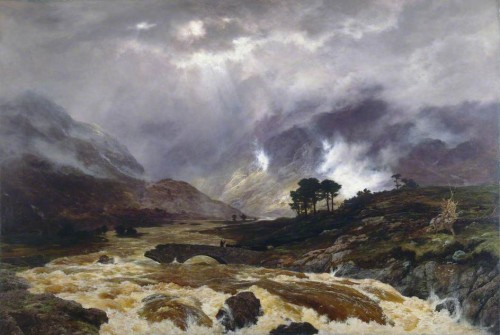 There is so much drama in this painting that it lends itself perfectly to descriptive writing and creating atmosphere in narrative, possibly as part of work on Macbeth.
There is so much drama in this painting that it lends itself perfectly to descriptive writing and creating atmosphere in narrative, possibly as part of work on Macbeth.
In order for the children to create a detailed atmospheric description, they will need to go beyond what they can see. Imagine a large volume button at the bottom of the painting, what sounds might they hear? You could even have a go at creating a soundscape for this setting or playing sound effects. Ask the children, “If you were to step into the painting what would you feel?” This is a great starting point for generating vocabulary on a basic level, developing more powerful adjectives and adverbs to describe a setting. This can then be used to move on to explore figurative language – similes, metaphors, personification in particular.
A wonderful way to add depth to this is also by looking at different sentence types. Pie Corbett’s syntactical gymnastics is a simple and very effective exercise. This can add an extra dimension to descriptive writing: write a statement about it (describe it), give it a command (boss it about), make it speak (what would it say?) and ask it a question (what do you want to know?).
The Funeral of a Viking by Frank Dicksee
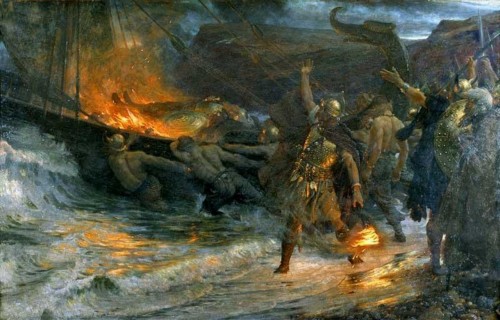 Myths and legends always capture the imagination of children, especially ones like Beowulf that have a bit of gore.
Myths and legends always capture the imagination of children, especially ones like Beowulf that have a bit of gore.
This painting is perfect for exploring narrative, in particular stories with flashbacks. This painting shows the funeral of a Viking, his body set out to sea on a burning pyre. Who was this man? Was he involved in some great battle, fighting to the death alongside his brother? Answering these questions helps children to build up a character and a backstory. Pupils can turn the funeral into a narrative and use flashbacks to tell the story of how this warrior met his death, with the figure in the centre of the painting becoming the storyteller.
Get the picture
There are many paintings or drawings that can be used in the primary classroom to open up new opportunities for exploring language or history. Pinterest is a great site for starting to build up a bank of images that could be used. Alternatively, take your class down to the local art gallery, if you have one. Many galleries welcome school groups and will happily let you do a self-guided drama session in the space around the painting (discuss this when you make the booking). What better way to connect with the painting than seeing it in the flesh?
Sophie Merrill is a curriculum leader and arts specialist based in Manchester. Find her on Twitter at @MissSMerrill.







